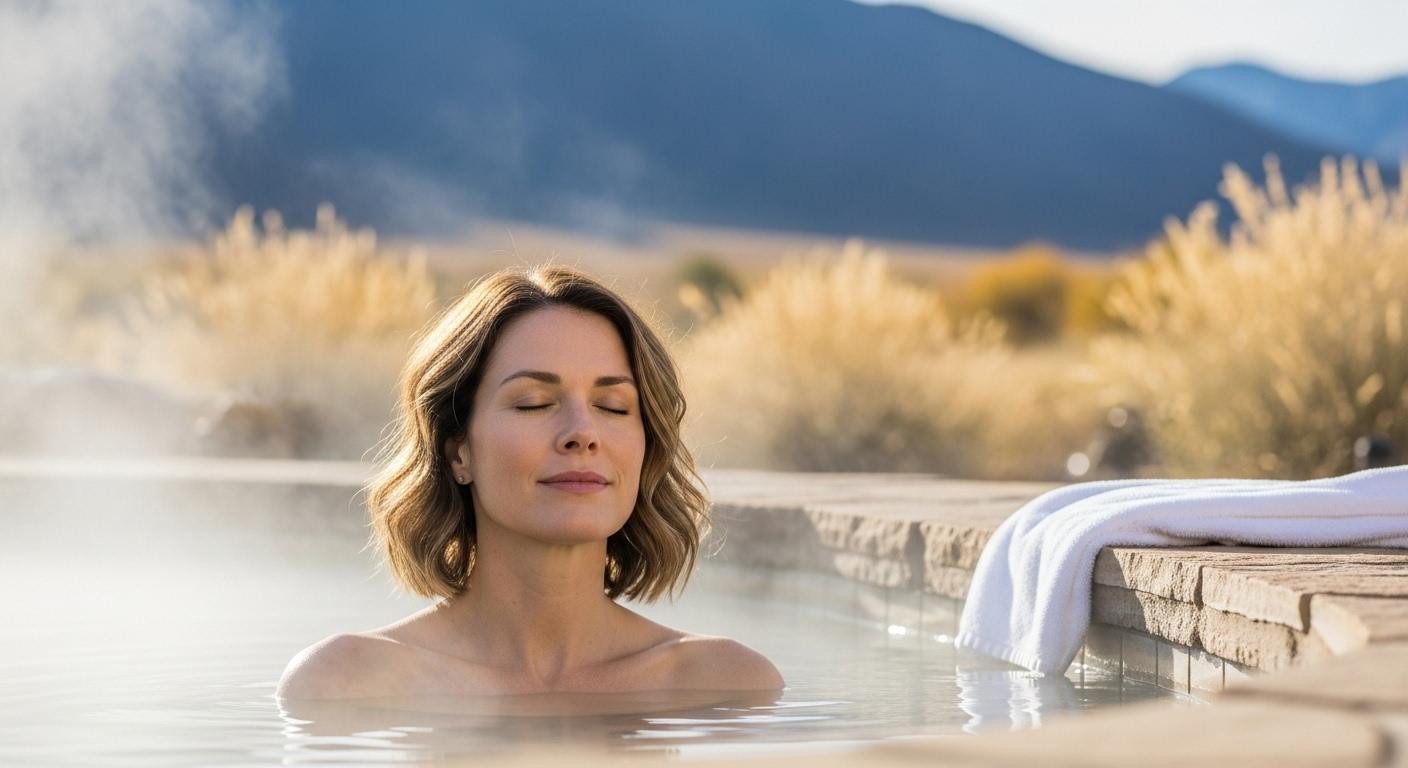October 27, 2025. Dawn breaks over Sedona’s red rocks at 6:47 AM, air temperature 62°F. Cool enough for a jacket, warm enough to watch sunrise from Cathedral Rock without shivering. Steam rises from your coffee while the desert awakens in silence. Three months ago, this same vista reached 105°F by 9 AM. Now enters the season most travelers miss: late October through March, when America’s southwestern deserts transform into their most serene, accessible incarnation.
The desert’s hidden climate window
Late October 2025 marks the threshold when Arizona, California, and Utah desert regions shift from summer extremes into perfect temperate conditions. Sedona temperatures stabilize between 58-72°F daily. Palm Springs drops from brutal 110°F summers to comfortable 70-75°F days.
Joshua Tree’s November through February window offers ideal hiking temperatures (60-68°F) without the scorching rocks that make summer trails dangerous. This isn’t just pleasant weather. It’s the biological sweet spot when desert ecosystems awaken.
Sonoran Desert wildflowers begin cycles, migratory birds arrive, and the landscape’s subtle transformations become visible. While summer tourists endure heat advisories, late fall through early spring visitors experience the desert’s authentic rhythm at its most hospitable. Sedona’s dawn hours reveal red rock colors impossible to capture during summer’s harsh overhead light.
Where locals retreat when seasons shift
America’s most serene desert sanctuaries concentrate in three distinct regions, each revealing different character during this optimal season window.
Arizona’s restored elegance
Castle Hot Springs (1.5 hours from Phoenix) reopened after meticulous restoration, capturing Gilded Age luxury in Bradshaw Mountains isolation. November through March temperatures (65-72°F) make the mineral pools ideal. Hot enough for therapeutic soaking, cool air creating steam contrast.
Sedona’s vortex sites see 40% fewer visitors post-October, yet red rock colors intensify under low winter sun angles that summer’s harsh overhead light never achieves.
California’s mid-century modern desert
Palm Springs architecture shines in winter’s 72°F clarity. The season that made it Hollywood’s 1950s playground returns: crisp mornings, warm afternoons, crystalline light on Richard Neutra’s geometric modernism.
Joshua Tree National Park’s boulder fields and twisted trees become accessible when summer’s 110°F surfaces cool to touchable 68°F rocks perfect for climbing.
The seasonal cost advantage nobody mentions
Late October through February represents desert travel’s value window that locals quietly exploit.
Accommodation strategies
Sedona’s luxury resorts drop rates 25-35% post-Halloween. Palm Springs boutique hotels that charge $400+ summer nights fall to $180-250 November through March (excluding major holidays). The Parker Palm Springs drops from $700-1,000 peak rates to $265 winter rates.
Castle Hot Springs’ all-inclusive rates ($1,200-1,500 per night) include meals, treatments, and activities. Comparable value to fragmented resort bookings elsewhere. Dove Mountain’s Ritz-Carlton near Tucson offers lowest seasonal rates December-February despite optimal 68°F golfing weather.
Experience access
Popular Sedona trails (Devil’s Bridge, Cathedral Rock) lose summer crowds. December-February sunrise hikes start in manageable 45°F temperatures rather than pre-dawn darkness to beat 100°F heat.
Joshua Tree’s Hidden Valley and Barker Dam trails become family-accessible without heat danger. The desert’s transformation isn’t about tolerating conditions. It’s about optimal conditions coinciding with value pricing.
What this season actually feels like
The sensory shift defines why late fall through early spring matters beyond temperature numbers. Castle Hot Springs’ 1890s pools steam against cool November air. That visible vapor contrast impossible in summer.
Sedona’s sunset light (4:30 PM in December) strikes red rocks at angles that create orange-gold intensities summer’s high sun can’t replicate. Joshua Tree’s night skies gain winter clarity when cool air settles dust particles.
Palm Springs’ mid-century pools become usable without feeling like hot tubs. The desert doesn’t just become comfortable. It becomes contemplative in ways summer’s survival mode prevents.
Your questions about desert retreat seasons answered
How cold do desert nights actually get in winter?
Sedona: 35-45°F overnight November-February (jacket necessary). Palm Springs: 48-55°F (light layer sufficient). Joshua Tree: 32-40°F (freezing possible December-January, but daytime warms to 60-65°F). Castle Hot Springs maintains 65°F minimum in accommodations. Pack layers: 50°F morning, 70°F afternoon temperature swings are common.
Do all desert retreats stay open November-March?
Major properties operate year-round; this is their peak season. Castle Hot Springs, Sedona’s resort infrastructure, and Palm Springs hotels thrive November-March. Joshua Tree campgrounds fill weekends but remain accessible weekdays. Only extreme elevation areas (8,000+ feet) close seasonally.
How does this compare to summer desert experiences?
Fundamentally different. Summer (June-September) means 100-115°F daytime heat, indoor activity focus, pre-dawn hiking only, and heat advisories limiting outdoor access. Late fall-spring offers 60-75°F comfort, all-day outdoor access, gentle hiking conditions, and the desert’s authentic pace without survival challenges.
Steam rises from Castle Hot Springs’ pools at 7:30 AM on a December morning. The thermometer reads 48°F air temperature. The water holds steady at 96°F. This contrast, visible as mist curling toward ponderosa pines, exists only now. Summer’s 105°F air erases the boundary between elements entirely.
